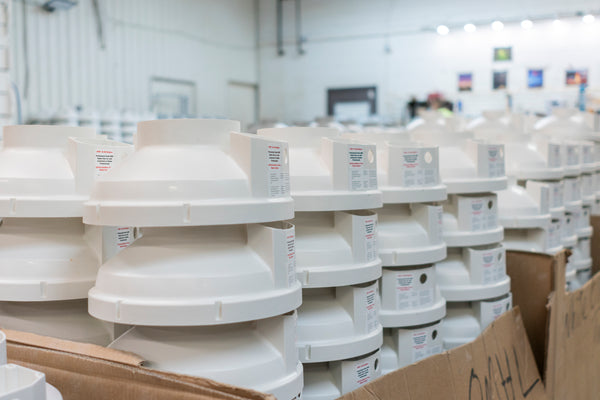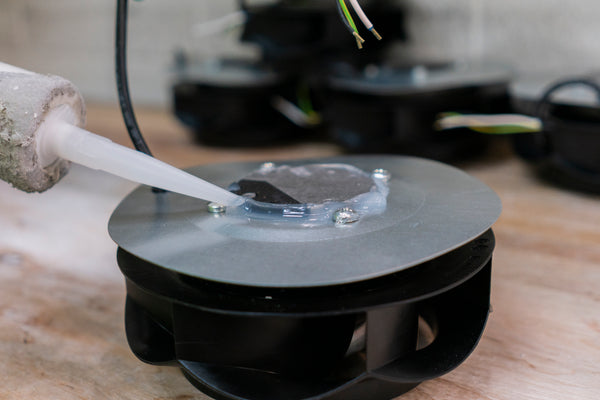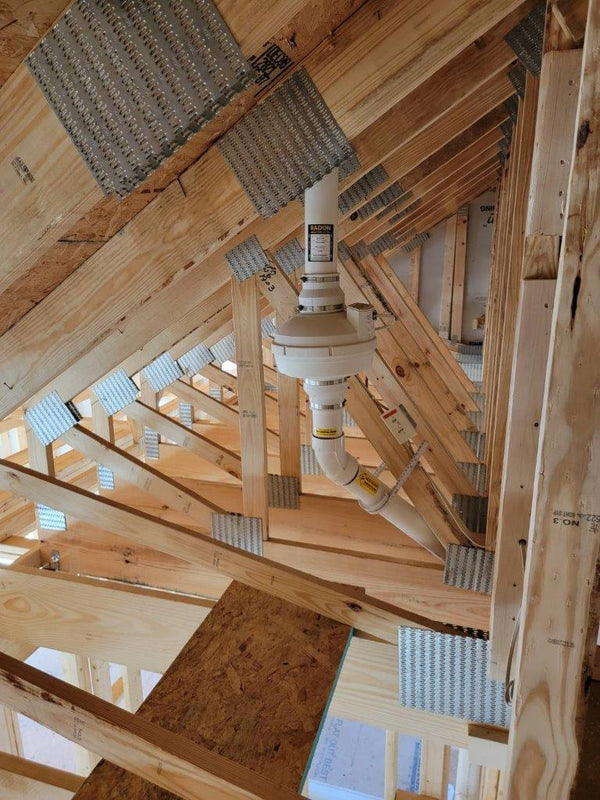
How To Mitigate Radon in a Home Without Drain Tile
If you've been researching your radon mitigation options, you may have encountered advice about using your home’s existing drain tile system to control radon levels. But what if your home doesn’t have drain tiles? Older homes or those built in certain locations often lack this foundation feature, making radon mitigation a little more complex.
This guide will walk you through the process of learning how to mitigate radon in a home without drain tile. From understanding drain tile systems to exploring effective mitigation strategies, we’ve got you covered.
The Risk of Radon
What Is Radon?
Radon is a radioactive gas released from the breakdown of uranium in soil, rock, and water. This naturally occurring gas is odorless, tasteless, and invisible, but it can be deadly.
Why Is Radon Harmful?
Radon is a silent intruder that could be lurking in your home, putting your health at risk. Prolonged exposure to high levels of radon has been linked to lung cancer, making it a serious concern for homeowners. The EPA estimates radon is the second leading cause of lung cancer in the US. If radon levels in your home reach or exceed 4 pCi/L (picocuries per liter), the EPA recommends taking immediate action.
How Does Radon Enter Homes?
Radon often finds its way inside due to pressure and temperature differences between the interior and exterior of your home. Warm air inside your home creates a vacuum effect that pulls radon through cracks in the foundation, gaps around pipes, or porous foundation materials. Homes with basements or those without effective ventilation or drainage systems may be particularly at risk. Though it’s naturally occurring and present in outdoor air at low levels, radon can accumulate to dangerous concentrations indoors.
Understanding Drain Tile in Home Construction
What Is a Drain Tile System?
Despite its name, a drain tile system isn’t made of tiles. It’s actually a network of perforated pipes installed in gravel trenches. These pipes capture and redirect water away from a home’s foundation. Drain tile systems help protect basements and foundations from flooding due to groundwater saturation. These systems are often connected to specialized motors, called sump pumps, that pump excess water away from the basement and foundation.

Interior vs. Exterior Drain Tile Systems
- Interior systems: Installed along the perimeter of the basement floor, they use a gravel trench and pipe network to collect water and direct it to a sump pump.
- Exterior systems: Placed along the outside perimeter of a home’s foundation, these systems work outside to manage groundwater before it enters the home.
Both systems have their advantages, but unfortunately, many homes don’t have either of them at all.
Why Do Some Homes Lack Drain Tiles?
The presence of drain tiles largely depends on the age of the home, its geographical location, and local building codes. Homes built before the 1920s are less likely to have drain tiles, as modern drainage techniques were not yet common. Additionally, soil composition and drainage patterns in certain areas may determine whether a home needed such a system when it was built.
How Does Radon Enter Homes Without Drain Tiles?
Without a drain tile system, radon has no predefined path to escape, so it seeps through cracks, construction joints, or the home’s porous concrete foundation. This makes addressing radon more challenging, as there isn’t an existing pathway to create suction or airflow beneath the foundation.
Radon Mitigation Methods for Homes Without Drain Tile
Dealing with radon in a home without a drain tile system requires a tailored approach. While it may be more complex, several effective methods are available.
1. Sub-Slab Depressurization
Sub-slab depressurization (SSD) is one of the most reliable and effective methods for radon mitigation. It involves creating a vacuum beneath the foundation with the help of PVC pipes and a radon fan.
Installation Process
To install SSD in a home without drain tiles, a contractor will:
- Drill suction points through the basement or foundation slab.
- Install a PVC pipe in the suction point and connect it to a fan system through a network of pipes.
- Route the vent pipe to an exterior discharge point.
Benefits and Drawbacks
- Benefits: Highly effective and works in most home types
- Drawbacks: Costs can be higher, especially in homes with compacted soil that makes drilling more labor-intensive
2. Sealing Cracks and Openings
Radon entry points include cracks in the foundation, construction seams, gaps around pipes, and even uncovered sump pits. While this isn’t a standalone mitigation method, it does help the SSD system work more effectively.
Sealing Techniques
- Use caulking or expandable foam specifically designed for radon to seal small gaps and cracks.
- Apply a concrete sealant to larger foundation cracks.
3. Increasing Ventilation
Natural Ventilation
Open windows and doors to allow fresh air to circulate. While this is a temporary measure, it can help reduce radon levels in the short term.
Mechanical Ventilation
Invest in a Heat Recovery Ventilator (HRV) or Energy Recovery Ventilator (ERV). These systems improve airflow while maintaining energy efficiency.
Benefits and Drawbacks
- Benefits: Improves overall indoor air quality in addition to reducing radon
- Drawbacks: It is often not enough to address high radon levels without the additional use of an SSD

DIY vs. Professional Mitigation: What’s Right for Your Home?
Assessing Your Skills and Comfort Level
DIY radon mitigation can work for minor fixes, such as sealing cracks. However, installing an SSD system typically requires professional expertise, especially for homes with challenging soil types or layouts.
When To Hire a Professional
Homes without drain tile systems may require advanced techniques that novice DIYers may find difficult to manage. Compact clay soil, in particular, can complicate the process of drilling suction points.
Finding a Qualified Radon Mitigation Specialist
Look for contractors certified by the National Radon Proficiency Program (NRPP) or the National Radon Safety Board (NRSB). Checking reviews and testimonials can also help you find a reliable specialist.
Maintaining Your Radon Mitigation System
Once a mitigation system is installed, it’s essential to ensure it’s working effectively. Continuous radon monitors, such as the EcoBlu or EcoQube, offer user-friendly options to track long-term radon levels in real time.
Regularly inspect system components like alarms, manometers (U-tubes), and vent pipes. Test fans to ensure they’re functioning correctly and replace them as needed. As long as you’re a confident DIYer, you can replace radon mitigation equipment yourself.
Protect Your Home and Family Today
Understanding how to mitigate radon in a home without drain tile is a crucial step in protecting your family’s health. While it may present unique challenges, methods like sub-slab depressurization, advanced sealing, and mechanical ventilation provide effective pathways to reducing radon levels.
Don’t underestimate the importance of regular testing and maintenance. Radon reduction requires more than just a single fix; it’s an ongoing effort. By taking action now, you can create a safer, healthier home.





